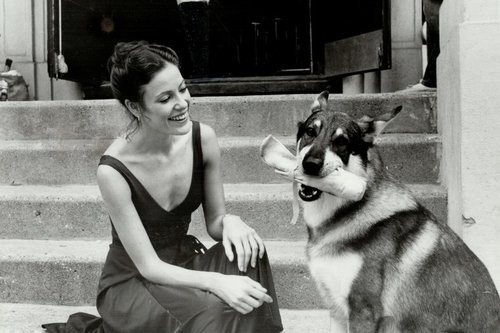Littlest Hobo, biggest hero
Who is this hero? He foils jewel thieves, clears the wrongly accused, and saves lives all across Canada. He’s not a celebrated detective, lawyer or doctor, though. He’s a German shepherd.
Anyone who has owned a television set with in the last 50 years has likely guessed we’re talking about the canine star of The Littlest Hobo, a Canadian television drama about an ownerless, nameless crime-solving dog who wandered from place to place helping people. In episode descriptions, his adventures read like writing prompts from a Canlit Premise Generator: Hobo befriends a lonely clown; a mime and a deaf boy help Hobo prevent a robbery; Hobo helps a reporter track down a sasquatch-like creature sighted near a small town. After each quirky instalment’s resolution, Hobo, true to the show’s sad-but-catchy theme song, just kept movin’ on.
Airing first from 1963 to 1965, and then again from 1979 to 1985, The Littlest Hobo was a prime example of Canadian television done right. During its tenure, the campy classic aired in 80 countries and was still charming Canadian audiences through reruns on CTV until 2013. Based on a 1958 American movie, also called The Littlest Hobo, the idea came north to British Columbia when Stuart and Dorrell McGowan, the producers behind the film, saw its television potential. Unfortunately, their black-and-white production halted in 1965 due to legal disputes, and the McGowans moved onto other projects. Years later, when the rights to Hobo became available, Christopher Dew, a Canadian editor on the original series, jumped at the chance to revive the story.
It was during Dew’s time as producer that The Littlest Hobo really found its footing, creating some of the show’s most iconic episodes: Hobo jumping through a car window; Hobo piloting a hot air balloon; Hobo trotting across a field with a rifle in his mouth. The renewed series gave overt nods to its Canadian heritage, shooting scenes at Canada’s Wonderland and on the TTC, and featuring homegrown talent like a young Mike Myers and Megan Follows, as well as appearances by and directorial guidance from the King of Kensington’s Al Waxman.
As delightful as these Easter eggs of Canadiana were to domestic audiences, the true star of the show was always a German shepherd. The top dog (I’m sorry) was named London, though several of his relatives had turns playing Hobo too: Toro took over for the first season of the revived series, and Bo appeared in the last five years of the show. In any given episode, up to five dogs might have been used in filming to perform dangerous tricks and to keep up with production schedules. Owned and trained by Charles P. Eisenmann, the dogs that starred in the series were trilingual and could understand an average of about 1,500 words in English, French and German. They all had distinct “reverse mask” markings.
Neither series nor the original film ever explained where Hobo came from, or what motivated him to act. Of course, London and the dogs that played him are now gone. And yet his lessons of selflessness and individuality in the face of conformity live on in the hearts of so many viewers around the world. Good job, Hobo. You were always there when someone needed you.
This story first appeared in Passport2017, a Strategic Content Labs and Heritage Canada project.
